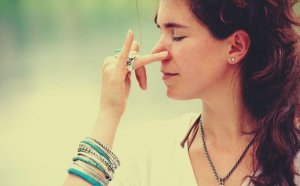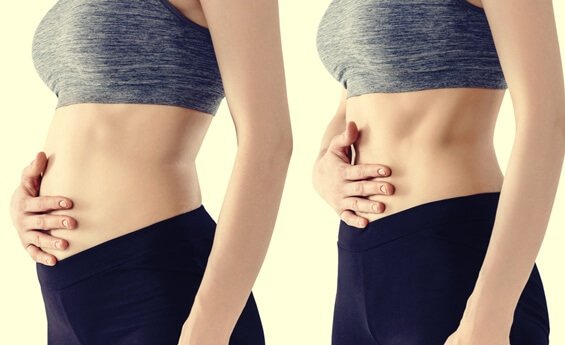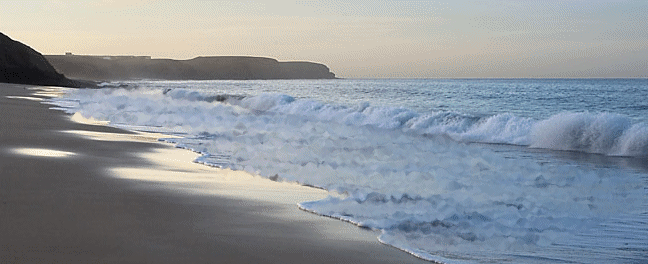4 Effective Breathing Techniques to Reduce Anxiety


Written and verified by the psychologist Gema Sánchez Cuevas
Breathing techniques require us to remember that this metabolic act is much more than just a physical process. Breathing well produces pleasure, relieves anxiety, and allows us to live better. So, including these breathing exercises into our day-to-day life may help us live more consciously, focused, and harmoniously.
Most people have never stopped to analyze the way they breathe. In fact, a good question is, why should we? Our body is an almost perfect machine that carries out a lot of processes automatically, which guarantees our survival. Thanks to this we can devote a good part of our energy to other tasks, such as reading this article, for example.
Now, questioning this line of thought can do us some good. Neglecting our body has consequences, and allowing our emotions to grip us leads to even worse results. Let’s not forget that an exhausted body, seized or controlled by excessive worry, haste, or anxiety, translates into a faster and abnormal breathing. This causes our body to perform metabolic tasks at an unbalanced and even dangerous rate.
You have to breathe better to live to your fullest, and these techniques can help.

1. Breathing Techniques: Diaphragmatic Breathing
When we think of breathing, most of us instantly visualize a pair of lungs. Well, it must be said that the diaphragm is actually responsible for breathing. It’s right there, under the lungs, separating the thorax from the abdominal area. It moves when we breathe. If we move it in a greater range, it will stimulate other organs such as the liver and a large number of tissues in order to boost blood circulation and even boost toxin elimination.
We must keep this body part in mind because the diaphragm is the essential part of most breathing techniques. Let’s look at how to become aware of it and stimulate it:
- Place one hand on your abdomen and another on your chest.
- Your back should be straight.
- Now, take a deep breath through the nose.
- Make sure that the diaphragm (the abdomen) raises, not the chest.
- Then, exhale audibly through your mouth.
- You should take 6 or 10 slow breaths per minute.
2. Alternate Nostril Breathing
This is one of the best-known breathing techniques. It’s also ideal to reduce anxiety and to promote relaxation and better concentration on a day-to-day basis. These are the steps to follow:
- Sit comfortably, remembering to keep your back straight.
- Now cover your right nostril with your right thumb.
- Next, inhale deeply as much as you can through the left nostril.
- Hold your breath as you switch, then remove your right thumb and cover your left nostril and exhale through the right nostril.
- Repeat the process on the other side.
It may seem complicated at first, but as soon as you feel comfortable with it, you’ll see its incredible benefits.
3. Skull-Shining Breath or Kapalabhati
Kapalabhati is one of the most effective breathing techniques to reduce anxiety and optimize your respiratory system. It helps clean the airways and even improves lung capacity.

The term kapalabhati comes from Sanskrit and is made up of two concepts: kapala which means “skull” and bhati which means “shine or the act of cleansing”. Let’s look at how to do it:
- Sit down with your back straight.
- Bring your chin towards your chest.
- Close your eyes to better concentrate on breathing.
- Inhale deeply.
- Then, make rapid exhalations by contracting the muscles of the abdomen, imagining that you’re pressing the belly button out towards the spine.
- As you do these exhalations, your body will automatically inhale again. You should do at least 10 to 15 quick exhalations in a row. Rest a few minutes and start again.
4. Visualized Breathing Technique
Many breathing techniques include various visualizations that help you relax even more. However, it requires a bit more expertise so that the whole process actually benefits you with those cathartic sensations capable of quenching tensions and reducing anxiety or stress.
Here’s how to do it:
- Lie down on the floor on a mat, or even on your bed.
- Place one hand on your abdomen and another on your chest to make sure that you breathe through your diaphragm.
- Now inhale deeply through your nose, imagining that a wave in the ocean is covering you from head to toe. Feel its freshness, the bubbling of the water, the way the water moves over you…
- Exhale through your mouth and visualize the same wave retreating slowly from you from head to toe…

To conclude, these simple breathing techniques can help you improve your wellbeing, keep you healthy, and untie the knot of all those tensions that make you sick little by little without you even noticing it. Dedicate a few minutes every day to breathing better, to live in better harmony with your own body and needs.
This text is provided for informational purposes only and does not replace consultation with a professional. If in doubt, consult your specialist.








